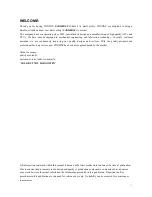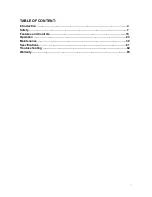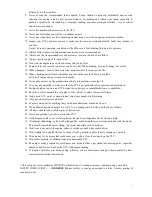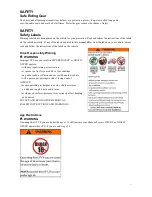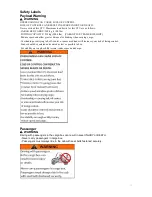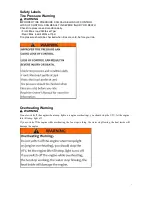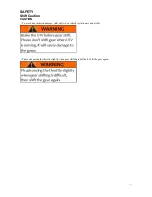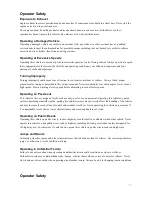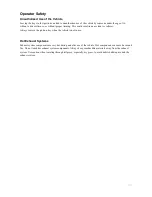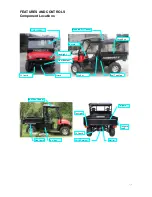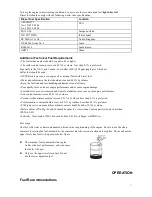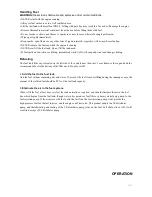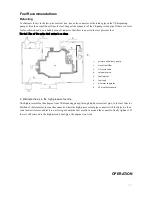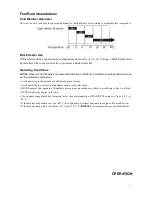
Operating on Slippery Terrain
Failure to use extra caution when operating on excessively rough, slippery or loose terrain could cause loss of
traction, loss of control, accident or rollover. Do not operate on excessively slippery surfaces.
Always slow down and use additional caution when operating on slippery surfaces.
Skidding or sliding due to loss of traction can cause loss of control or rollover (if tires regain traction
unexpectedly). Always follow proper procedures for operating on slippery surfaces as described in this owner's
manual.
Improper Hill Climbing
Climbing hills improperly can cause loss of control or vehicle rollover. Always follow proper procedur es for
climbing hills as described in this owner's manual.
Descending Hills Improperly
Improperly descending a hill could cause loss of control or rollover. Always follow proper procedures for
traveling down hills as described in this owner’s manual.
Stalling While Climbing a Hill
Stalling or rolling backwards while climbing a hill could cause a rollover. Always maintain a steady speed when
climbing a hill.
If all forward speed is lost:
• Apply the brakes.
• Place the transmission in reverse and slowly allow the vehicle to roll straight downhill while applying light
brake pressure to control speed.
If you begin rolling downhill:
• Never apply engine power.
• Apply the brakes gradually until the vehicle is fully stopped.
• Place the transmission in reverse and slowly allow the vehicle to roll straight downhill while applying light
brake pressure to control speed.
Improper Tire Maintenance
Operating this vehicle with improper tires or with improper or uneven tire pressure could cause loss of control or
accident. Always use the size and type of tires specified for your vehicle. Always maintain proper tire pressure as
described in the owner's manual and on safety labels.
Operating on Frozen Bodies of Water
Severe injury or death can result if the vehicle and/or the operator fall through the ice. Never operate the vehicle
on a frozen body of water unless you have first verified that the ice is sufficiently thick to support the weight and
moving force of the vehicle, you and your passengers, and your cargo, together with any other vehicles in your
party.
Always check with local authorities and residents to confirm ice conditions and thickness over your entire route.
Vehicle operators assume all risk associated with ice conditions on frozen bodies of water.



